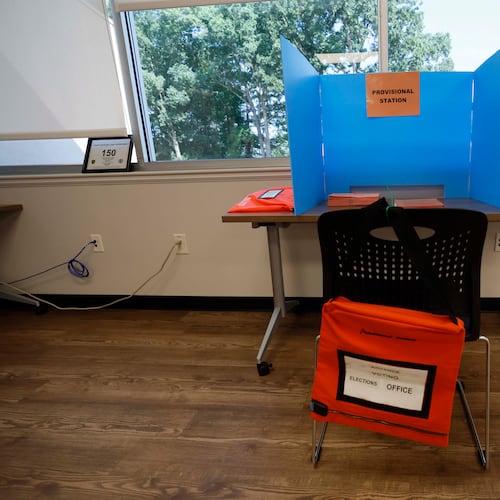Georgia is poised to become one of the first states to heed a call Wednesday by states' governors and school leaders to voluntarily adopt common national standards in English, language arts and mathematics.
The National Governors Association and the Council of Chief State School Officers released the new standards Wednesday at Peachtree Ridge High School in Suwanee, a location chosen with a nod toward Gov. Sonny Perdue. He co-chaired the initiative on behalf of the governors association.
They represent agreement on what students from Atlanta to Los Angeles, from kindergarten to 12th grade, from the suburbs to the inner city, collegiate-bound or work-ready, should know and master in core skill areas. To achieve them, it took a rare show of unity across state lines, politics and business -- although the hard work has only begun.
The release marks the start of a new phase, in which individual states may adopt and implement the standards. It is not clear how many will do so. Forty-eight states, two territories and the District of Columbia signed on in support of the Common Core State Standards Initiative, although they face no timeline to act.
Georgia officials, however, are already on board. State school board members are expected to begin formal consideration of the standards next week during their regular monthly meetings. They could adopt them as soon as July, although it would not be until fall 2011 -- to give teachers a year to learn and digest them -- that the standards reached classrooms statewide.
"Now's the time. Now's the place," Perdue said of the initiative, which he included on the state's application for the Obama administration's $4 billion Race to the Top school-reform fund to boost the state's chances to win money.
He also said their adoption had added urgency given the economic impact an educated work force has for local cities and states. "The competition is global. This should not be the ceiling but the floor of expectations that we can agree to nationally."
The standards, which are internationally benchmarked against how other nations educate their children, took a year to research and write. Delaware Gov. Jack Markell said the process was "driven locally, not by Washington." The U.S. Department of Education was not involved in the standards' development.
They have the support from a who's who of education experts and organizations, including the College Board, the National School Boards Association, the National Education Association, the National Parent-Teacher Association and the State Higher Education Executive Officers. Sixty-two companies, including IBM, Dell and Verizon, signed a joint letter in support of the standards. So did 55 city schools superintendents, including Atlanta's Beverly Hall.
"This is not a fad," said Randi Weingarten, president of the unionized, 1.4 million-member American Federation of Teachers. She likely has had little opportunity to share a stage with Perdue, a governor quick to tout Georgia's typically non-unionized labor force, but they did just that Wednesday, as Weingarten called the standards "an essential building block for life."
Currently, each state has its own set of academic standards that can vary widely in how success for students is measured. A common set of standards allows states to make apple-to-apple comparisons among schools as well as ease the transition for families if they move from one state to another.
The standards do not replace curriculum but are, in essence, a set of shared goals and outcomes. Teachers would still design lesson plans about how to achieve them. States would still test students to see what they learned. Those tests are usually aligned by states to their own curriculum, but Steve Paine, state schools superintendent of West Virginia, suggested Wednesday that by adopting common standards, states down the road could additionally begin to share common assessments instead of making up their own.
Georgia officials believe the standards closely align with the state's curriculum. They have set aside $1.2 million that over the next year would pay for professional development to help teachers learn the common standards and use them in class.
The new standards
State governors and school chiefs announced Wednesday common national standards in English, language arts and mathematics that, if adopted, would allow states to make apple-to-apple comparisons among schools as well as ease the transition for families if they move from one state to another. According to the standards:
A fifth-grader: Should be able to write a report that clearly conveys ideas and information; is properly formatted; links ideas within and across categories of information; includes facts, definitions, concrete details, quotations or other information and examples; uses precise language and domain-specific vocabulary; and provides a concluding statement or section related to the information or explanation presented.
An eighth-grader: Should be able to read and analyze how a modern work of fiction draws on themes, patterns of events, or character types from myths, traditional stories, or religious works such as the Bible, including describing how the material is rendered new.
In high school: A student should be able to use polynomials to solve problems; evaluate reports based on data; and construct, compare and solve problems using linear and exponential models.
About the Author
Keep Reading
The Latest
Featured


